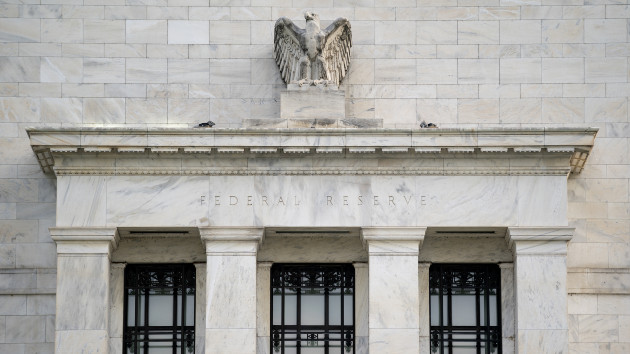
(WASHINGTON) — The Federal Reserve instituted a dramatic interest rate hike on Wednesday, the latest in a series of borrowing cost increases, as the central bank tries to dial back near-historic inflation while avoiding an economic downturn.
The Fed raised the benchmark interest rate by 0.75%, repeating the same hike it imposed at each of the last two meetings. Prior to this year, the Fed last matched a hike of this magnitude in 1994.
The move arrives a little more than a week after a higher-than-expected inflation report revealed that prices rose slightly in August, worsening the cost woes for U.S. households and sending the S&P 500 tumbling for its worst day of 2022.
The Fed has put forward a string of aggressive interest rate hikes in recent months as it tries to slash price increases by slowing the economy and choking off demand. But the approach risks tipping the U.S. into a recession and putting millions out of work.
Federal Reserve Chair Jerome Powell on Wednesday reasserted the central bank’s commitment to bring inflation down to a target rate of 2%, saying the Fed expects to put forward “ongoing increases” to its benchmark interest rate.
“We have both the tools we need and the resolve it will take to restore price stability on behalf of American families and businesses,” Powell said.
In a statement on Wednesday, the Federal Reserve depicted the U.S. economy as one struggling with high prices.
“Inflation remains elevated, reflecting supply and demand imbalances related to the pandemic, higher food and energy prices, and broader price pressures,” the Federal Reserve said.
“Recent indicators point to modest growth in spending and production. Job gains have been robust in recent months, and the unemployment rate has remained low,” the statement added.
Hours before the rate hike announcement, chief executives at some of the largest U.S. banks sounded the alarm over sky-high inflation in testimony before Congress, warning that price hikes would require further borrowing cost increases from the Federal Reserve that will slow the economy and impose widespread financial pain.
Speaking at a conference held by the conservative-leaning Cato Institute, Powell said earlier this month that the central bank must act “forthrightly, strongly” to dial back inflation.
The rate hikes have yielded mixed results, however. On an annual basis, consumer prices have moderated slightly but remain highly elevated.
The consumer price index rose 8.3% over the past year as of August, a slight slowdown from 8.5% in July, according to the Bureau of Labor Statistics.
Some prices have already fallen significantly, though. Gas prices dropped 10.6% in August, the bureau said.
Meanwhile, rate increases appear to have slowed key sectors of the economy, sending mortgage rates higher and slowing the construction of new homes, for instance.
Still, other indicators suggest the U.S. economy continues to hum.
U.S. hiring fell from its breakneck pace but remained robust in August, with the economy adding 315,000 jobs and the unemployment rate rising to 3.7% as more people sought work, according to data released by the Bureau of Labor Statistics in early September.
On Wednesday afternoon, immediately after the rate hike announcement, each of the major stock indexes had fallen slightly.
Copyright © 2022, ABC Audio. All rights reserved.
